| Technology Standards Groups & Industry Associations |
|
Rather than always linking to Wikipedia entries for common topics, I have been using ChatGPT to research and post brief summaries on many technical topics. The results are not always perfect, but I edit them as needed to be accurate. Courts have ruled that AI-generated content is not subject to copyright restrictions, but since I modify them, everything here is protected by RF Cafe copyright. Here are the major categories. Electronics & High Technology Company History | Electronics & Technical Magazines | Electronics & Technology Pioneers History | Electronics & Technology Principles | Technology Standards Groups & Industry Associations | Vintage Vacuum Tube Radio Company History | Electronics & High Technology Components | Societal Influences on Technology | Science & Engineering Instruments Tech Groups & Associations
The Antique Wireless Association (AWA) is an organization that was founded in 1952 to preserve the history of radio communication and the development of wireless technology. The AWA was established by a group of individuals who were interested in collecting and restoring antique radio equipment. The AWA's founders recognized the importance of preserving the history of radio technology, which had played a critical role in the development of communication and broadcasting. They also saw the need to create a community of people who shared their passion for antique radios and related technology. The AWA has grown significantly since its inception, and it now boasts a membership of over 4,000 individuals from around the world. The organization is headquartered in Bloomfield, New York, and has several chapters throughout the United States and internationally. The AWA is involved in a range of activities related to antique radio technology, including the restoration and preservation of antique radios and related equipment, the publication of research and articles related to radio history, and the organization of conferences and events focused on antique radio technology. - See Full List - Atomic Energy Commission (AEC) The Atomic Energy Commission (AEC) played a central role in overseeing and conducting nuclear bomb tests during the mid-20th century. Following the development of atomic weapons during World War II, the AEC spearheaded a series of nuclear tests aimed at refining and advancing nuclear capabilities. These tests served multiple purposes, including assessing the effectiveness of new bomb designs, studying the effects of nuclear explosions on various environments, and asserting military dominance during the Cold War. Beginning with the Trinity test in 1945, which marked the first detonation of a nuclear device, the AEC conducted numerous atmospheric, underground, and underwater tests throughout the following decades. The AEC's bomb tests had far-reaching consequences, both domestically and internationally. Domestically, these tests raised concerns about the health and environmental impacts of radioactive fallout on nearby communities and ecosystems. Public opposition to nuclear testing grew, culminating in protests and calls for greater transparency and accountability from the government. Internationally, the AEC's bomb tests contributed to escalating tensions between nuclear-armed nations and fueled the arms race during the Cold War. Efforts to limit nuclear testing culminated in the signing of the Limited Test Ban Treaty in 1963, which prohibited nuclear tests in the atmosphere, underwater, and in outer space. Despite these limitations, the AEC continued to conduct underground nuclear tests until the 1990s, when growing awareness of the environmental and humanitarian consequences of nuclear weapons led to renewed calls for disarmament and non-proliferation. The legacy of the AEC's bomb tests serves as a reminder of the enduring impacts of nuclear weapons testing on human health, the environment, and global security. - See Full List -
The BBB was founded in 1912 as the National Vigilance Committee for the Promotion of Ethical Business Practices in Advertising. It was later renamed the Better Business Bureau in 1921. The organization was established in response to concerns about fraudulent and deceptive advertising practices, with the goal of improving consumer trust in the marketplace. In the early years, the BBB primarily focused on combating misleading advertising. It worked to establish standards for truthful advertising and to expose businesses that engaged in deceptive practices. Over time, the BBB's role expanded to include mediation and resolution of consumer complaints. One of the key features of the BBB is its accreditation program, which allows businesses to become BBB-accredited after meeting certain standards of trust and transparency. Accredited businesses can display the BBB logo to demonstrate their commitment to ethical business practices. The accreditation process involves a review of the company's history, adherence to BBB standards, and resolution of consumer complaints. The BBB also assigns ratings to businesses based on various factors, including complaint history, transparency, and customer reviews. These ratings help consumers make informed decisions when choosing businesses to engage with. In recent years, the BBB has faced criticism regarding the credibility and relevance of its ratings system. Some critics argue that the BBB's accreditation process and ratings may not accurately reflect a business's reputation or ethical practices. Additionally, there have been concerns raised about the transparency and effectiveness of the complaint resolution process. It's worth noting that the BBB is not a government agency and does not have legal authority over businesses. Its role is primarily to provide information and mediation services to consumers and businesses. - See Full List - Committee of Ten Million to Oppose All-Number Calling The Committee of Ten Million to Oppose All-Number Calling was an organization that was formed in 1960 in the United States in response to the increasing use of all-number dialing for telephone calls. Like the Anti-Digit Dialing League, the Committee of Ten Million believed that all-number calling was impersonal and dehumanizing, and that it threatened to erode the community and social values that were associated with traditional letter-and-number dialing. The organization was founded by Reverend John "Jolly John" H. Griffin, an African American Baptist minister from Louisiana who was also a civil rights activist. Griffin believed that all-number calling was part of a larger trend of technological dehumanization and that it disproportionately affected minority communities, who were more likely to rely on telephone services as a means of communication. The Committee of Ten Million used a variety of tactics to oppose all-number calling, including public demonstrations, letter-writing campaigns, and legal action. They also tried to raise public awareness about the issue by distributing pamphlets, staging mock funerals for the traditional dialing system, and organizing boycotts of telephone services. Despite their efforts, all-number dialing eventually became the standard for telephone calls in the United States and in many other countries around the world. However, the Committee of Ten Million is remembered as an important voice in the history of telecommunications and as an early example of grassroots activism against technological change. - See Full List -
The Electronic Industries Association (EIA) is a trade association that was founded in 1924 in the United States. Its primary aim is to promote the interests of the electronic components and systems industry, including manufacturers, suppliers, and distributors of electronic components, as well as manufacturers of electronic equipment and systems. The EIA was formed as a response to the growing demand for electronic components and equipment, and to provide a platform for companies in the industry to collaborate and share information. Over the years, the EIA has played a significant role in shaping the electronic industry, by developing standards for electronic products and systems, promoting the industry through research and advocacy, and fostering innovation and growth. One of the key contributions of the EIA has been the development of industry standards, which have helped to ensure the compatibility and interoperability of electronic products and systems. The EIA's standards activities have covered a wide range of topics, including interfaces, dimensions, performance, and safety. The EIA has also been instrumental in the development of global standards for the electronics industry, through its participation in international standards organizations such as the International Electrotechnical Commission (IEC) and the International Organization for Standardization (ISO). In addition to standards development, the EIA has also been involved in advocacy and research activities aimed at promoting the interests of the electronics industry. For example, the EIA has conducted research on various aspects of the industry, including market trends, technology trends, and economic impacts. The EIA has also been a strong advocate for policies and regulations that support the growth and competitiveness of the industry, such as promoting fair trade practices and protecting intellectual property rights. The EIA has undergone several changes over the years, including mergers and acquisitions, but its commitment to promoting the interests of the electronics industry has remained strong. Today, the EIA is a global organization with members from around the world, and it continues to play a vital role in shaping the future of the electronics industry. - See Full List -
The International Electrotechnical Commission (IEC), founded in 1906, is an international standards organization that develops and publishes international standards for all electrical, electronic, and related technologies. The IEC is made up of national committees from countries all around the world, which work together to develop and promote international standards. The IEC's work covers a wide range of fields, including power generation and distribution, electronics, telecommunications, and renewable energy. The organization is responsible for developing and publishing many important international standards, including those for electrical safety, electromagnetic compatibility, and energy efficiency. The IEC is one of the oldest and most respected international standards organizations in the world. It was founded in 1906 and is headquartered in Geneva, Switzerland. Today, it continues to play a critical role in promoting international standardization in the field of electrical and electronic technologies. - See Full List -
The Institute of Electrical and Electronics Engineers (IEEE) is a professional association that was formed in 1963 through the merger of the American Institute of Electrical Engineers (AIEE) and the Institute of Radio Engineers (IRE). However, the history of the IEEE can be traced back to the late 1800s, when the AIEE was founded. The AIEE was founded in 1884 by a group of American electrical engineers, with the goal of advancing the theory and practice of electrical engineering. The organization held its first technical conference in 1885 and published its first journal, the Transactions of the AIEE, in 1886. Over the years, the AIEE grew in membership and influence, becoming a leading professional association for electrical engineers. Meanwhile, in 1912, the Institute of Radio Engineers (IRE) was founded, with the goal of promoting the development of radio engineering and its applications. Like the AIEE, the IRE held technical conferences and published journals, and it grew in membership and influence over the years. In the 1950s and 1960s, the fields of electrical engineering and radio engineering began to overlap more and more, as electronics became increasingly important in both areas. As a result, the AIEE and IRE began to collaborate more closely, and in 1963, they merged to form the IEEE. Today, the IEEE is the world's largest technical professional organization, with over 400,000 members in more than 160 countries. The organization is dedicated to advancing technology for the benefit of humanity, and it sponsors many conferences, journals, and other publications that disseminate cutting-edge research and development in a wide range of fields, including electrical engineering, computer science, and telecommunications. - See Full List -
JEDEC, an acronym for Joint Electron Device Engineering Council, is a respected organization with a significant history of developing industry standards, including standards related to electrostatic discharge (ESD) in the microelectronics industry. JEDEC was founded in 1958, having been rename from the Joint Electron Tube Engineering Council (JETEC), which began in 1944. Initially, it focused on standardization in the electron tube industry but expanded its scope to include semiconductor devices and technologies. Over the years, JEDEC has played a crucial role in the development of standards for the microelectronics industry. JEDEC is known for its work in developing and maintaining a wide range of industry standards for semiconductor components, materials, and manufacturing processes. These standards are essential for ensuring interoperability, quality, and consistency within the industry. JEDEC has developed and maintained standards for various types of memory devices, such as DRAM (Dynamic Random-Access Memory), including DDR (Double Data Rate) SDRAM standards. JEDEC provides specifications for semiconductor package outlines and dimensions to ensure compatibility and ease of assembly. JEDEC also publishes guidelines and standards related to the quality, reliability, and testing of semiconductor components to ensure their performance and durability. Additionally, JEDEC sets standards for thermal management solutions in electronic systems to manage heat and prevent overheating. JEDEC developed standards related to ESD (electrostatic discharge) protection. These standards define ESD protection levels, test methods, and requirements for semiconductor components to withstand ESD events without damage. These standards help ensure that devices are designed to be robust and reliable in ESD-prone environments. - See Full List - MIL-STD-883 MIL-STD-883 is a U.S. military standard that specifies test methods and procedures for microelectronic devices. Developed by the Department of Defense (DoD), MIL-STD-883 outlines the requirements for evaluating and testing the reliability, performance, and quality of various semiconductor devices, integrated circuits, and other microelectronic components. It is commonly used in military and aerospace applications to ensure the integrity of electronic components in harsh environments. MIL-STD-883 includes a wide range of test methods and procedures, and it is organized into different test groups, each covering specific aspects of microelectronics testing. Some of the key test groups within MIL-STD-883 include: Test Group 1000 - Environmental Tests: This group covers environmental testing, such as temperature cycling, humidity, and thermal shock tests, to assess the device's ability to withstand extreme conditions. Test Group 2000 - Mechanical and Microsectioning Tests: This group involves tests related to physical and mechanical properties, as well as the examination of device cross-sections to evaluate construction and material quality. Test Group 3000 - Physical Tests: These tests focus on physical characteristics like dimensions, lead configuration, and marking permanency. Test Group 4000 - Electrical Tests: This group includes a variety of electrical tests to assess the electrical performance and characteristics of the device, such as static and dynamic tests. Test Group 5000 - Radiation Tests: Radiation testing is important for assessing a device's resistance to ionizing radiation, which is particularly relevant in aerospace and military applications. Test Group 6000 - Chemical and Mechanical Tests: These tests evaluate the resistance of microelectronic components to chemicals and mechanical stresses. Test Group 7000 - ESD (Electrostatic Discharge) and Latch-Up Tests: This group addresses ESD and latch-up testing to assess a device's sensitivity to electrostatic discharge and other potentially damaging transient conditions. MIL-STD-883 is widely used in the aerospace and defense industries as well as by suppliers of components to these sectors. Compliance with MIL-STD-883 standards is often required for components used in military and space systems to ensure they can withstand the extreme conditions and rigorous demands of these applications. Additionally, MIL-STD-883 is considered a valuable reference for quality and reliability testing, not only in military contexts but also in other high-reliability industries. - See Full List -
The National Television System Committee (NTSC) was established by the U.S. Federal Communications Commission (FCC) in 1940 to address the need for a standardized analog television system in the United States. By March 1941, the committee issued a technical standard for black-and-white television, building upon a recommendation from the Radio Manufacturers Association (RMA) in 1936. This standard recommended 525 scan lines, striking a compromise between RCA's 441-line standard and the desires of Philco and DuMont for higher line counts. Additionally, it proposed a frame rate of 30 frames per second, interlaced into two fields, an aspect ratio of 4:3, and the innovative use of frequency modulation (FM) for sound signals. In the 1950s, the NTSC was reassembled to tackle color television standardization. CBS had briefly gained FCC approval for a 405-line field-sequential color television system in 1950, but this system was incompatible with existing black-and-white receivers. It utilized a rotating color wheel, reducing scan lines to 405 and increasing the field rate to 144, resulting in an effective frame rate of 24 frames per second. Legal battles ensued, and this system faced significant setbacks, with regular broadcasts lasting only a few months before being halted due to manufacturing bans during the Korean War. The competition between CBS's 405-line color system and RCA's efforts led to regulatory confusion. RCA, Philco, and other companies worked together to develop a new color standard that would be compatible with existing black-and-white sets. In December 1953, the FCC unanimously approved what is now known as the NTSC color television standard (RS-170a), which introduced a color subcarrier at 3.579545 MHz to add color information while maintaining compatibility. This standard, with its adjusted horizontal line rate of around 15,734 lines per second and a frame rate of approximately 29.970 frames per second, set the stage for the widespread adoption of color television. The development of the NTSC standard marked a significant milestone in television history, establishing the technical groundwork for color broadcasting. Despite the challenges posed by competing systems like CBS's 405-line color approach, the NTSC's commitment to backward compatibility and collaboration among industry players ultimately led to its widespread acceptance, shaping the trajectory of television technology for decades to come. The inclusion of "ALL" in the logo signifies that the NTSC standard was designed to be compatible with a wide range of television receivers and broadcasting equipment. It was intended to ensure that television signals transmitted in the NTSC format could be received and displayed properly on various television sets, regardless of the manufacturer or specific model. - See Full List - The term "NewSpace" referred to a growing sector of the space industry that encompasses private companies and startups working on innovative space technologies and services. These companies are distinct from traditional government space agencies like NASA and ESA. NewSpace companies focus on commercial spaceflight, satellite deployment, space tourism, asteroid mining, space habitats, and more. Satellites play a crucial role in NewSpace ventures. They are used for various purposes, including telecommunications, Earth observation, climate monitoring, navigation, scientific research, and national security. NewSpace companies often design, build, and launch their satellites into space to offer services or data to government entities, businesses, and the public. Private Companies and Startups: NewSpace refers to a subset of the space industry that is driven by private companies and startups rather than traditional government space agencies. These companies operate with more flexibility and agility, often adopting innovative business models and approaches to space activities. Innovative Space Technologies: NewSpace companies are at the forefront of developing new and cutting-edge technologies for space exploration, research, and commercial applications. These technologies encompass a wide range of fields, including propulsion systems, materials science, spacecraft design, advanced manufacturing techniques, and more. Commercial Spaceflight: One of the primary areas of focus for NewSpace companies is commercial spaceflight. They aim to provide access to space for various customers, including satellite operators, scientific researchers, governments, and even individuals. Reusable rocket technology, pioneered by companies like SpaceX, has significantly lowered the cost of launching payloads into space and has opened up new opportunities for commercial space ventures. Satellite Deployment: NewSpace companies are actively involved in designing, building, and deploying satellites for a multitude of applications. This includes communication satellites for global internet connectivity, Earth observation satellites for environmental monitoring, and navigation satellites for GPS and other location-based services. Space Tourism: Some NewSpace companies are working on space tourism ventures, aiming to offer suborbital or orbital spaceflights to private individuals or researchers. The goal is to make space travel accessible to a broader range of people and promote the idea of space exploration for non-professional astronauts. Asteroid Mining: Mining asteroids for valuable resources, such as precious metals and water, is another area of interest for NewSpace companies. The potential availability of these resources in space could have significant implications for future space missions and even Earth's economy. Space Habitats: NewSpace companies are researching and developing technologies to establish sustainable habitats in space. These habitats could be used for long-duration space missions, lunar bases, or even colonies on other planets, such as Mars. Space Research and Scientific Missions: Some NewSpace companies partner with scientific organizations and researchers to carry out space missions focused on advancing scientific knowledge. These missions may involve studying celestial bodies, conducting experiments in microgravity, or exploring the cosmos in unique ways. The emergence of the NewSpace sector has brought a wave of excitement and innovation to the space industry. These companies are challenging traditional norms and pushing the boundaries of what is possible in space exploration and utilization. As they continue to evolve and mature, their contributions are likely to have a lasting impact on the future of space activities and humanity's relationship with the cosmos. - See Full List -
Radio Free Europe (RFE) is a broadcasting organization that was initially established during the Cold War as a way to provide uncensored news and information to audiences living in countries behind the Iron Curtain, particularly those under the influence of the Soviet Union. The organization was funded and supported by the United States government. The idea behind Radio Free Europe was to counter the state-controlled media in communist countries and provide an alternative source of news and information. The broadcasts aimed to provide accurate news, information about the world, and discussions on topics that were often censored or distorted by the local governments. The original broadcasts began in the early 1950s, and over time, Radio Free Europe expanded its coverage and established additional services targeting specific countries and regions. Some of the notable regions covered by Radio Free Europe included Eastern Europe, the Balkans, the Soviet Union, and the Middle East. After the end of the Cold War and the dissolution of the Soviet Union in the early 1990s, the focus and structure of Radio Free Europe evolved. The organization shifted its emphasis from countering communist propaganda to supporting independent journalism and providing accurate news and information in countries undergoing political transitions and facing challenges to press freedom. Radio Free Europe, along with its sister organization Radio Liberty, continued to operate as part of the Broadcasting Board of Governors (BBG) until 2018, when they were reorganized into a single corporate entity known as Radio Free Europe/Radio Liberty (RFE/RL). RFE/RL continues to provide news, information, and analysis to audiences in countries where press freedom is restricted or under threat. - See Full List - During the Great Depression of the 1930s, the Tennessee Valley region in the southeastern United States faced significant economic challenges. The region was plagued by poverty, soil erosion, deforestation, and frequent flooding of the Tennessee River and its tributaries. Many residents lacked access to electricity and basic amenities. In 1933, President Franklin D. Roosevelt signed the Tennessee Valley Authority Act into law as part of the New Deal, a series of programs aimed at providing economic relief and recovery during the Great Depression. The Tennessee Valley Authority (TVA) was established as a federal agency with a unique mandate to address the economic and environmental issues facing the Tennessee Valley. The TVA's initial mission was to develop a comprehensive plan for the Tennessee Valley region. This included flood control through the construction of dams and reservoirs, the generation of hydroelectric power, and the promotion of agricultural and industrial development. The TVA was tasked with improving living conditions for the people in the region and creating jobs. The TVA embarked on an ambitious program to build a series of dams along the Tennessee River and its tributaries. These dams not only controlled flooding but also generated electricity. Some of the most notable TVA dams include Norris Dam, Wheeler Dam, and Fontana Dam. One of the significant achievements of the TVA was its efforts in rural electrification. By extending electrical service to rural and underserved areas, the TVA improved the quality of life for residents and facilitated economic growth in the region. During World War II, the TVA played a crucial role in providing power for defense production. Many TVA facilities were used in the production of materials needed for the war effort. - See Full List -
|
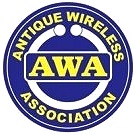
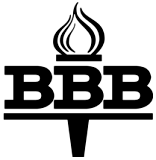 Better Business Bureau (BBB)
Better Business Bureau (BBB)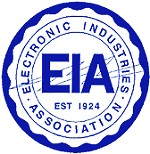 Electronic Industries Association (EIA)
Electronic Industries Association (EIA)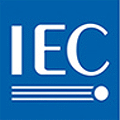 International Electrotechnical Commission
(IEC)
International Electrotechnical Commission
(IEC)
 Institute of Electrical and Electronics Engineers (IEEE)
Institute of Electrical and Electronics Engineers (IEEE) JEDEC - Joint Electron Device Engineering Council
JEDEC - Joint Electron Device Engineering Council 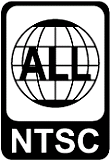 National Television System Committee (NTSC)
National Television System Committee (NTSC)
 Radio Free Europe / Radio Liberty
Radio Free Europe / Radio Liberty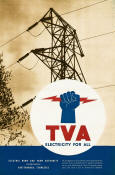
 Voice of America (VOA) is a U.S. government-funded
international multimedia agency that provides news, information, and cultural programming
to audiences outside the United States. It is part of the U.S. Agency for Global
Media (USAGM), an independent agency of the U.S. government. VOA was established
in 1942 during World War II with the aim of countering Nazi propaganda and promoting
American values and policies abroad. It initially broadcast in German, and later
expanded to other languages. Today, VOA broadcasts in more than 40 languages, including
English, targeting a global audience. VOA operates through radio, television, and
digital platforms, reaching millions of people worldwide. Its programming covers
a wide range of topics, including news, current affairs, culture, education, and
entertainment. VOA strives to provide accurate and objective reporting, offering
diverse perspectives on global events and issues. As a U.S. government-funded entity,
VOA is subject to the principles of the VOA Charter, which mandates that it provide
accurate, objective, and comprehensive news and information. The agency aims to
promote democracy, freedom of expression, and the values of a free press. It's worth
noting that while VOA is funded by the U.S. government, it operates independently
and maintains editorial independence. Its journalists and broadcasters are expected
to adhere to professional journalistic standards and avoid promoting any particular
political agenda. Overall, VOA plays a significant role in international broadcasting,
providing news and information to audiences worldwide and serving as a platform
for dialogue and understanding between different cultures and nations.
Voice of America (VOA) is a U.S. government-funded
international multimedia agency that provides news, information, and cultural programming
to audiences outside the United States. It is part of the U.S. Agency for Global
Media (USAGM), an independent agency of the U.S. government. VOA was established
in 1942 during World War II with the aim of countering Nazi propaganda and promoting
American values and policies abroad. It initially broadcast in German, and later
expanded to other languages. Today, VOA broadcasts in more than 40 languages, including
English, targeting a global audience. VOA operates through radio, television, and
digital platforms, reaching millions of people worldwide. Its programming covers
a wide range of topics, including news, current affairs, culture, education, and
entertainment. VOA strives to provide accurate and objective reporting, offering
diverse perspectives on global events and issues. As a U.S. government-funded entity,
VOA is subject to the principles of the VOA Charter, which mandates that it provide
accurate, objective, and comprehensive news and information. The agency aims to
promote democracy, freedom of expression, and the values of a free press. It's worth
noting that while VOA is funded by the U.S. government, it operates independently
and maintains editorial independence. Its journalists and broadcasters are expected
to adhere to professional journalistic standards and avoid promoting any particular
political agenda. Overall, VOA plays a significant role in international broadcasting,
providing news and information to audiences worldwide and serving as a platform
for dialogue and understanding between different cultures and nations.